F-35 Bay Presents Challenges To Weapons
F-35 bay environment raises questions about thermal, acoustic limits of available weapons
Sep 17, 2012
Amy Butler | Aviation Week & Space Technology
Developers of the multinational
F-35 are finally embarking on a multi-year campaign to demonstrate the single-engine stealthy fighter's ability to dispatch weapons. But uncertainties loom about the impact of internal-carriage requirements on those weapons' effectiveness.
The
Lockheed Martin F-35, and the
F-22 before it, have introduced a new level of complexity into the air-launched-weapons world by demanding that munitions long anchored on external wing and belly pylons of legacy fighters be carried in small, stealthy internal bays. The Air Force decided decades ago to forgo large payloads—epitomized by the
F-15 Strike Eagle—in pursuit of a significantly reduced radar cross section, allowing for fighters to evade air defenses and penetrate into enemy air space.
A high-speed engineering camera captures an image of the 1,000-lb. JDAM just after being released from the F-35B during last month's safe-separation test. (Credit: JSF Joint Program Office)
While the F-22 was a step in this direction, the F-35 is expected to carry far more weapon types in its bay, which has a challenging thermal and acoustic environment. Although the bay has not presented developers with conditions beyond the specifications of weapons slated for use in the F-35, engineers acknowledge there is little margin. “We are within about 10-12 degrees in most cases. But it is close” to the design specifications of some weapons, says Charlie Wagner, weapons integrated project team lead for the F-35 Joint Program Office. “It is not that simple, though. Maybe I can get [a weapon] that hot. But can I get it hot for an hour? Or can it be that hot for two days?”
Wagner says experts in the military are studying the potential prolonged and cumulative effects of operating so close to margin for weapons such as the 1,000-lb. GBU-32
Joint Direct Attack Munition (JDAM) and GBU-31 2,000-lb. version. Both ground-attack weapons are slated for early use on the aircraft. A thornier issue, perhaps, will be the environmental impact of the bay on weapons employing more sophisticated electronics, sensors and motors, such as the
RaytheonAIM-120C7/D Advanced Medium-Range Air-to-Air Missile (Amraam) or British AIM-132 Advanced Short-Range Air-to-Air Missile (Asraam). “I don't know if the weapons people know that for sure,” says Wagner. “We are pushing what they designed to. . . . If I'm going to the extreme of what they tested [a weapon] to, they may not have a real good understanding of how that is going to affect the weapon over the next 20 years.”
Operating near or at the margins is not new for the F-35 program, which has suffered problems keeping the F-35B to the required weight. Though the weight issues have been resolved—with roughly 300 lb. of margin now on the aircraft, according to
Marine Corps Commandant Gen. James Amos—developers are loath to run into similar problems with the operating margins of weapons in the F-35 bay. This is especially true as the Pentagon faces major funding cuts in the coming years; shortcomings in programs could make them vulnerable for reductions or terminations by Congress.
As scientists and engineers continue to study these issues, the flight-testing program is moving forward. The first jettison test took place Aug. 8, when a GBU-32 was dropped from BF-03, a short-takeoff-and-vertical-landing F-35B at NAS Patuxent River, Md. The trial was designed only to ensure safe separation, and the weapon was inert. This is the first in a short series of such jettison tests. At least two are slated for next month, including the first drop of a GBU-31 from a conventional-takeoff-and-landing F-35A.
An F-35B conducts its first weapons safe-separation test with a clean, 1,000-lb. JDAM drop. (Credit: JSF Joint Program Office)
The F-35 maintained a speed of roughly Mach 0.65 at level flight for the first drop; higher speeds are slated for future demonstrations. However, Wagner notes that it is not urgent to test high bank angles for JDAM drops because, in the field, the F-35 will likely be employed primarily in level flying conditions to maintain the lowest radar cross section possible for ground-attack missions.
Varied angle-of-attack maneuvers will come into play when engineers begin testing the use of Amraam on the F-35. As pilots will want to “fire and forget” their air-attack weapons, they will need to employ them in a much larger flight envelope than the ground-attack munitions.
Unlike the JDAM series, Amraam is powered by a solid-rocket-fuel motor and is dispatched from its position on the door of the F-35 weapon bay. JDAMs are carried on a bomb rack mounted inside the belly.
Initially, developers plan only to demonstrate safe separation of the Amraam, using test bodies lacking a rocket motor. They hope to actually fire an Amraam from the F-35 by the end of January, Wagner says.
Although the three F-35 types share some elements, each weapon model must be tested separately on each fighter version. Those trials will be conducted in parallel, he says. The program prioritizes tests of internal-carriage weapons, as those are required for the Block II and Block III F-35 releases; Block IIB software is what the U.S. Marine Corps will use for declaring initial operational capability (IOC) with its F-35Bs.
The first external weapons will be used in Block III, which is the software version required for IOC for Air Force and Navy models; Block III will be released no earlier than 2017. Introduction of the
Boeing GBU-39 Small-Diameter Bomb, a 250-lb. glide weapon, is slated for the Block IV software release at the end of the decade. This weapon was developed by the Air Force specifically to maximize the number of ground targets that the F-35, with its limited internal-bay space, can attack on a single mission; four SDBs can be mounted in place of each JDAM position, allowing for the F-35 and F-22 to each carry eight of the weapons internally. The SDB II, a version incorporating a tri-mode seeker for all-weather, day/night engagements, is now being developed by Raytheon. The first units will be delivered for operational use in 2016 (see p. 61).
The F-35 also is being developed to carry nuclear weapons. Testing of nuclear munitions on the fighter is not slated to begin until after the aircraft development phase is complete.
In the meantime, F-35 developers are sharing the thermal and acoustic data being collected from the bay with the weapon manufacturers. While the bay environment is close to the design specifications of weapons already in the arsenal, the developers hope that sharing this information will help engineers crafting next-generation munitions to design them with those environmental factors in mind, Wagner says.
The Aug. 8 weapon separation test was a major milestone for the Pentagon-led F-35 program. To view a video of it, check out the digital edition of AW&ST on leading tablets and smartphones, or
visit AviationWeek.com/jdamdrop
Integrating a number of diverse weapons onto the F-35 will be critical to the stealthy fighter's utility for its global customers. To view an interactive chart of weapons slated for use on the F-35, check out the digital edition of AW&ST on leading tablets and smartphones, or
visit AviationWeek.com/jsfweapons
Credit: Lockheed Martin

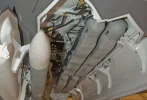
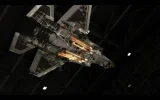
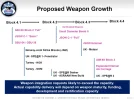
 Kaikissa noissa sun lainauksissa on mukana myös ilmasta maahan aseet...
Kaikissa noissa sun lainauksissa on mukana myös ilmasta maahan aseet...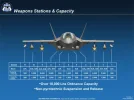
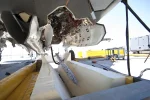
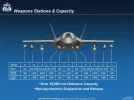








 Siinä muuten mahdollisesti kiiltelee Hawkin korvaaja.
Siinä muuten mahdollisesti kiiltelee Hawkin korvaaja.